
 Tech
Tech
 Images By Taylor Kempkes
Images By Taylor Kempkesay back in 1994, back when I’d just begun my career in the magazine industry, I picked up a cherry 1954 Chevy Bel Air in San Bernardino, California, for $1,300 and had started to do some upgrades on it with Custom Rodder. Having the pleasure of working closely with my journalistic mentor, MiniTruckin’ editor Courtney “Tito” Hallowell (RIP), he suggested I follow the growing trend at the time and instead of simply static dropping the ’54, have it airbagged. Problem was, there were no kits back then. Fortunately, there were people like Brian Jendro (The Chop Shop in Escondido, California) who didn’t need any kits … just a torch, a welder, and a technically motivated imagination. (I’m sure someone will correct me, but to the best of my knowledge, that was the first “non-mini-truck” air suspension installation document in print!)


A quick discussion with my once-colleague now Air Lift Performance (which, ironically, was who Jendro and I used for the ’bags and paddle switches on the ’54 three decades ago!) at SEMA regarding the situation led to developing a game plan to install Air Lift’s 3H (height-sensor controlled) programmable air-ride management along with a FLO Air dual-tank mounting system and a quartet of new dual-convoluted air springs. The next step was to find someone in SoCal to handle the install, as Jendro had long since relocated out of state!
Regarding the Air Lift kit, Mike supplied us with Air Lift’s complete 3H system (fully programmable digital control module with hard-wired—and Bluetooth capable—controller, individual height sensors, dual VIAIR 444C compressors, wiring harness, and 3/8-inch nylon air line) along with four replacement airbags and FLO Air’s dual 18-inch modular tank system with billet mounts. Old Anvil supplied the technical knowhow and hands-on skillset, and collaboratively, we/I ended up with a fully modernized, digitally programmable (non-leaking) air ride system that, now with the articulating All Access bed floor, can proudly be displayed in public, whether at the gas station topping off or at Dino’s showing off!


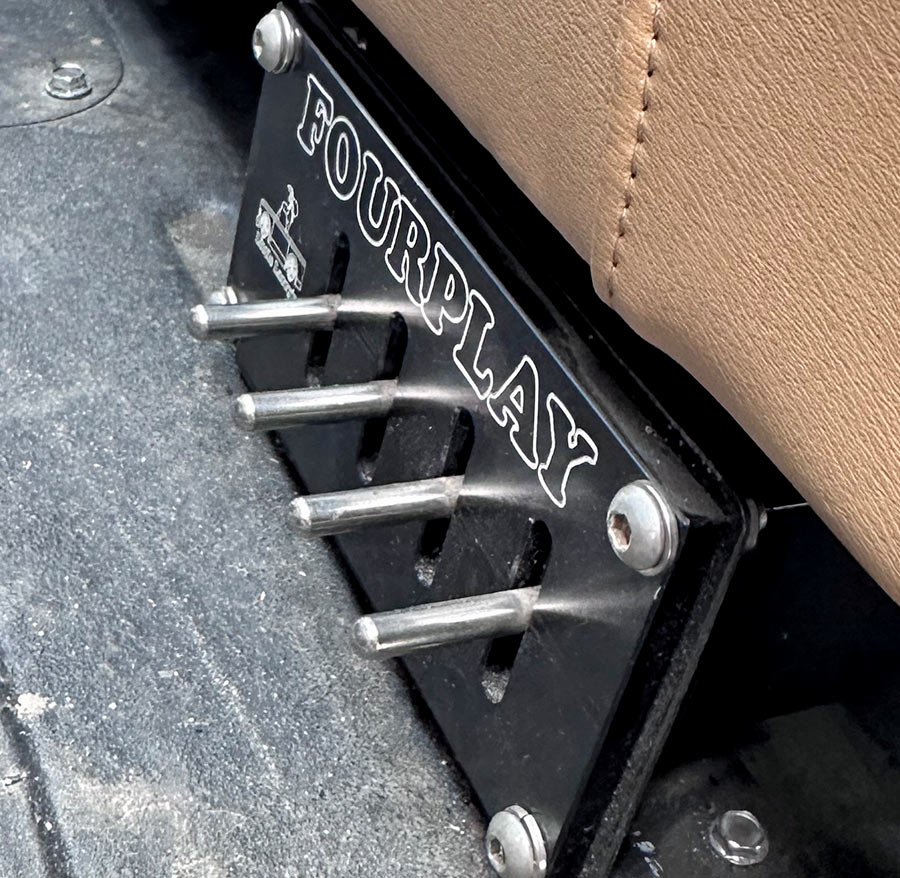




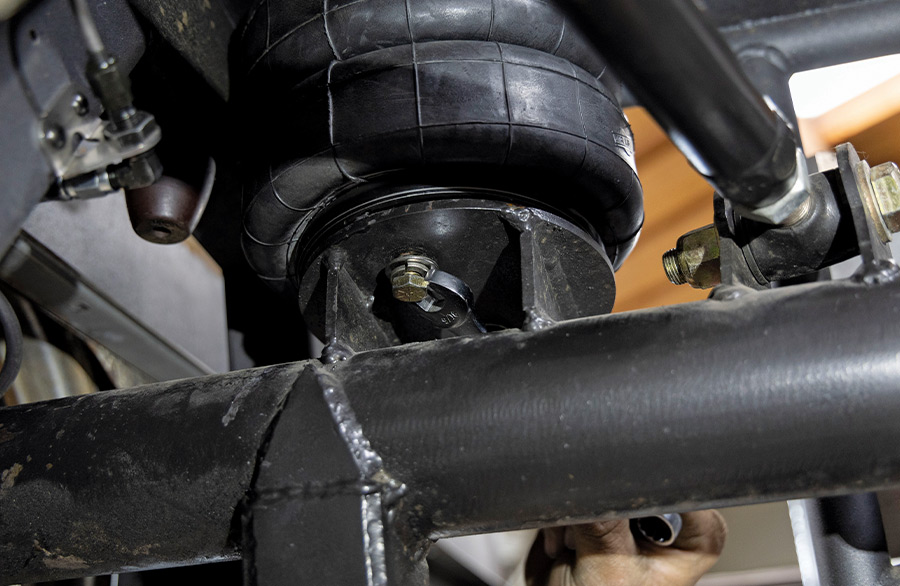
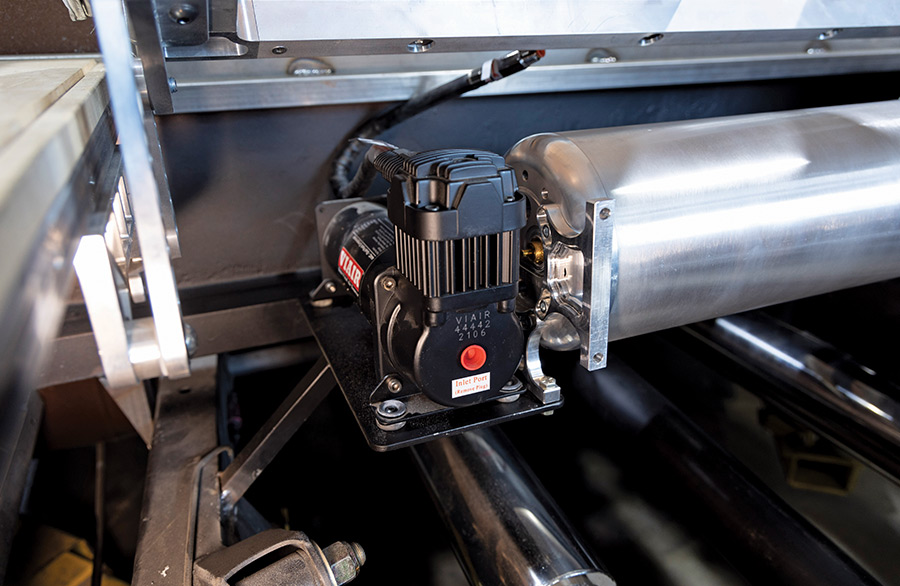

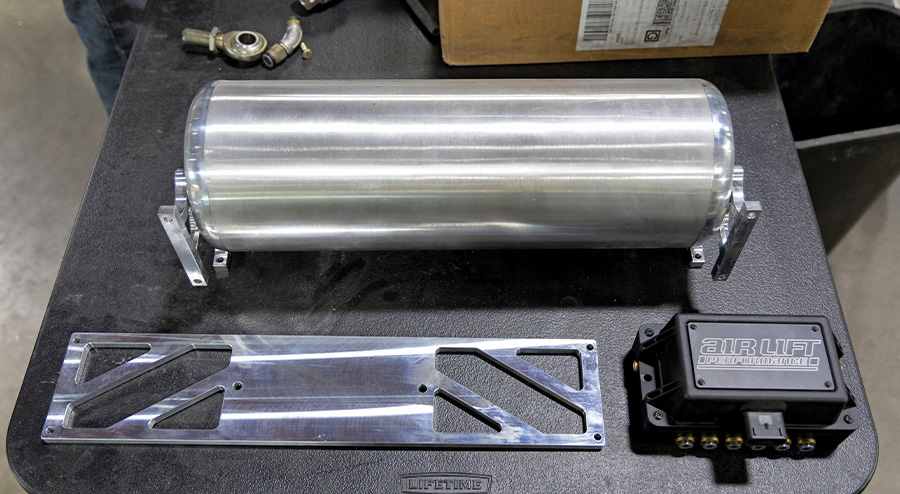
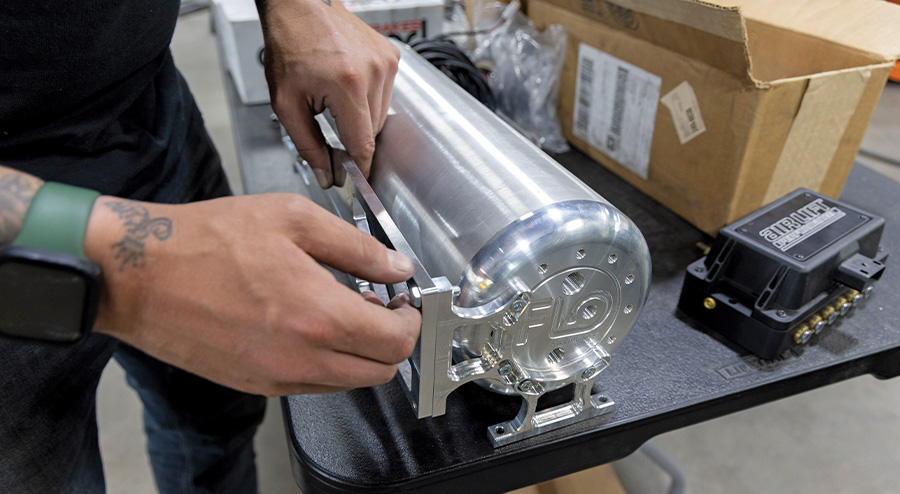
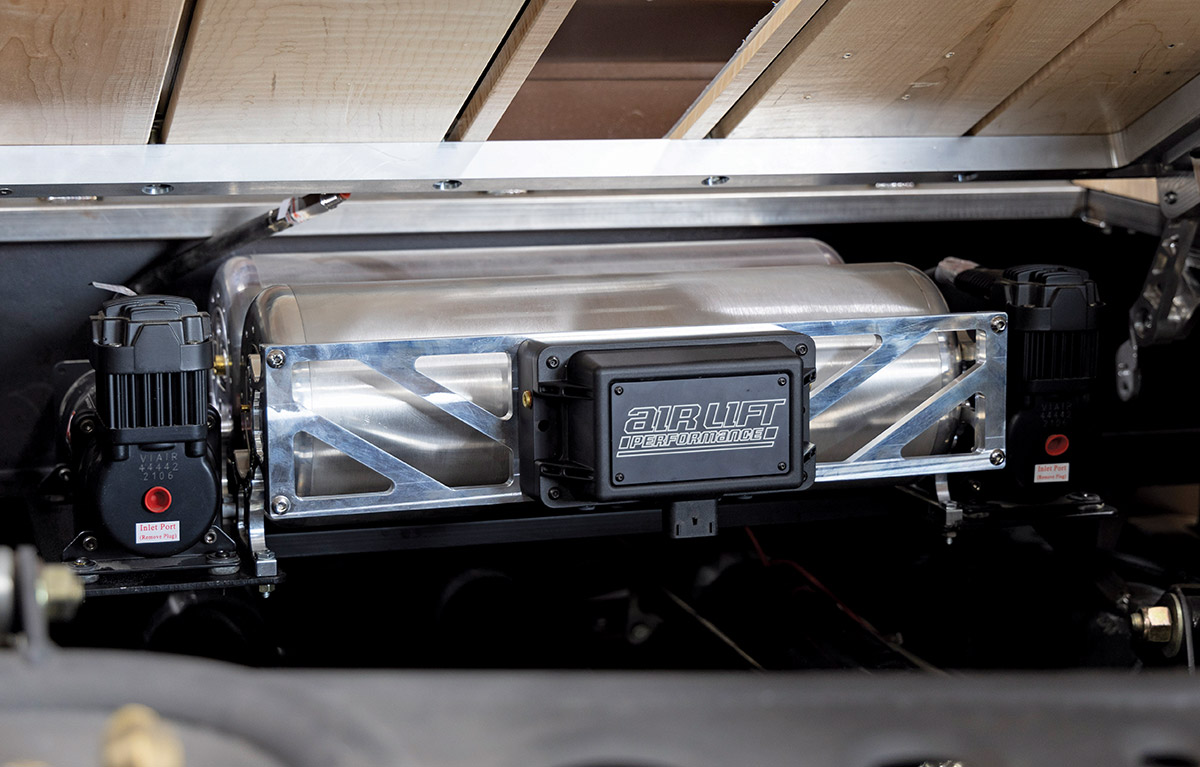



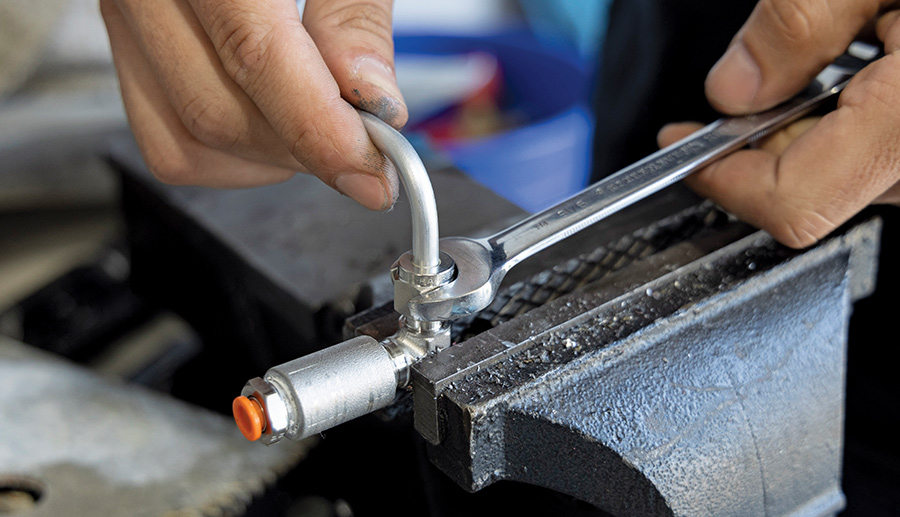
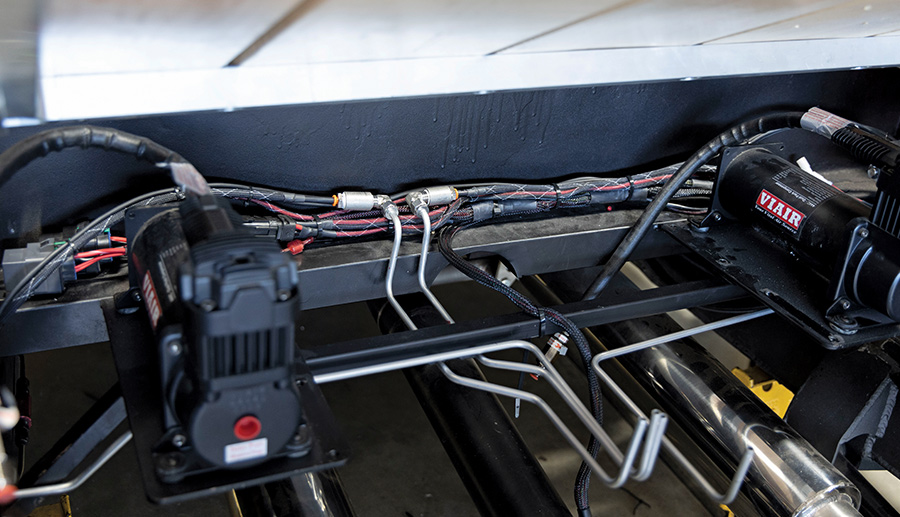
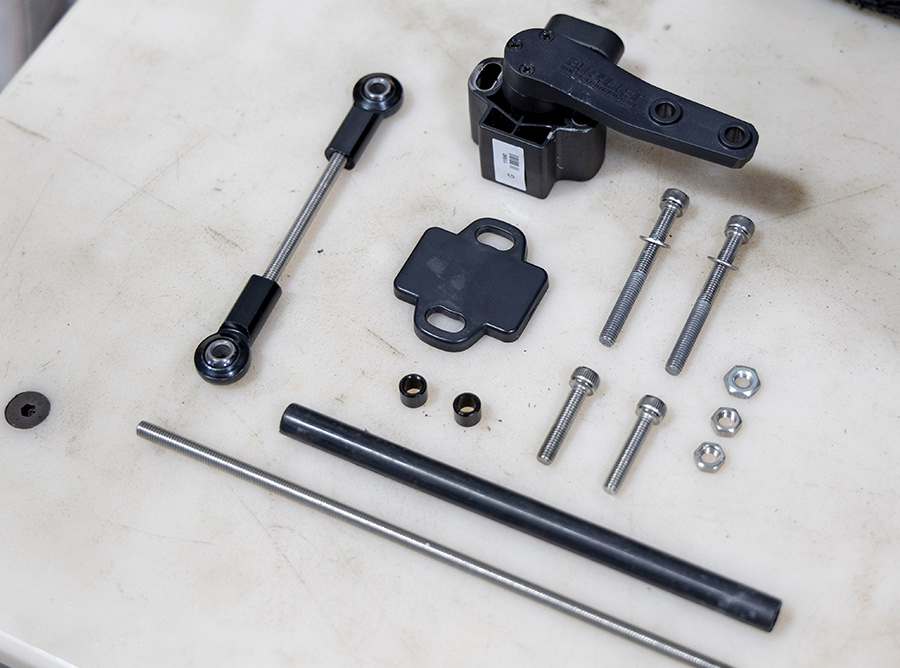
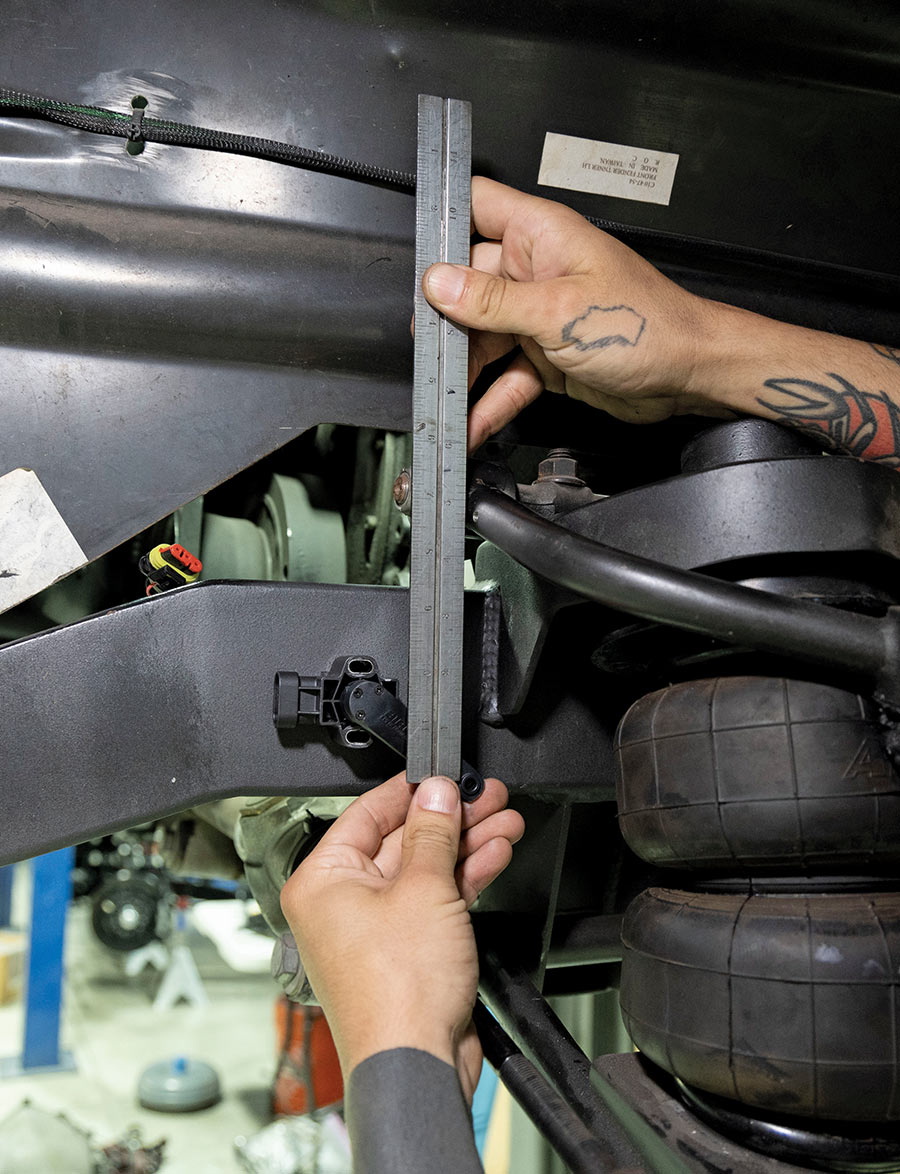

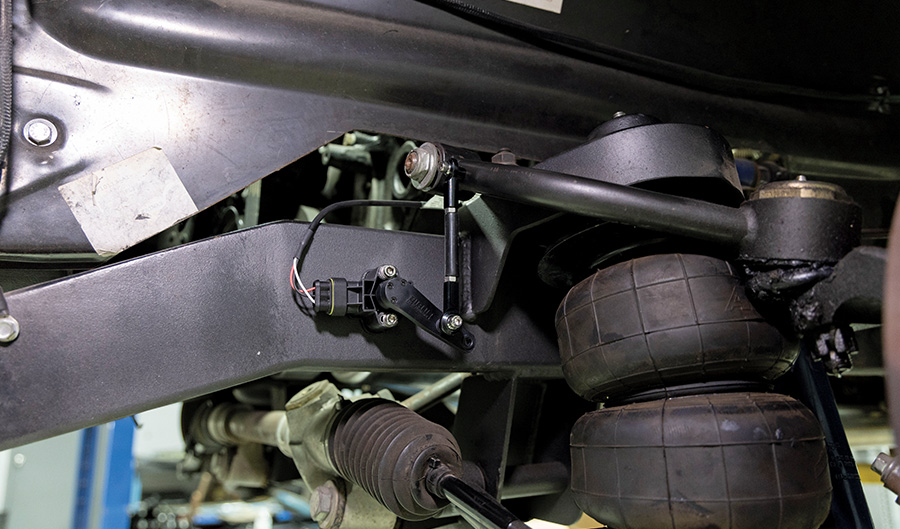

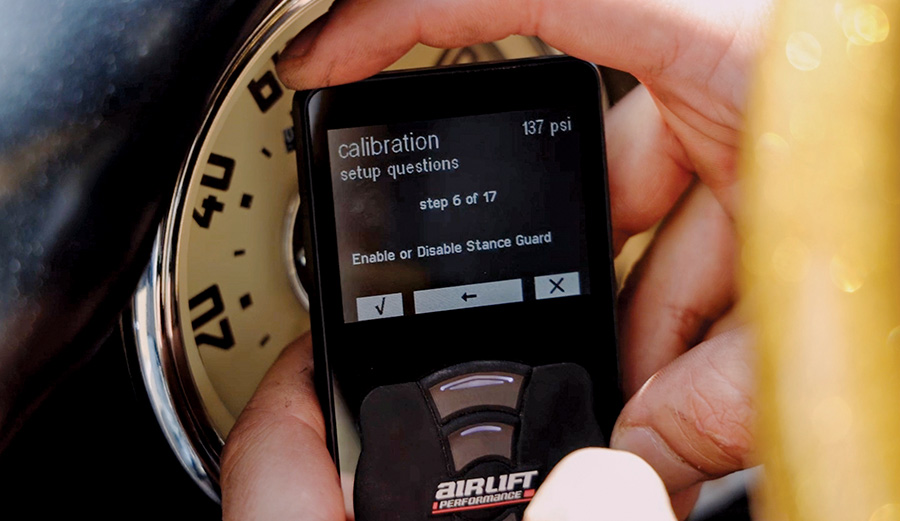

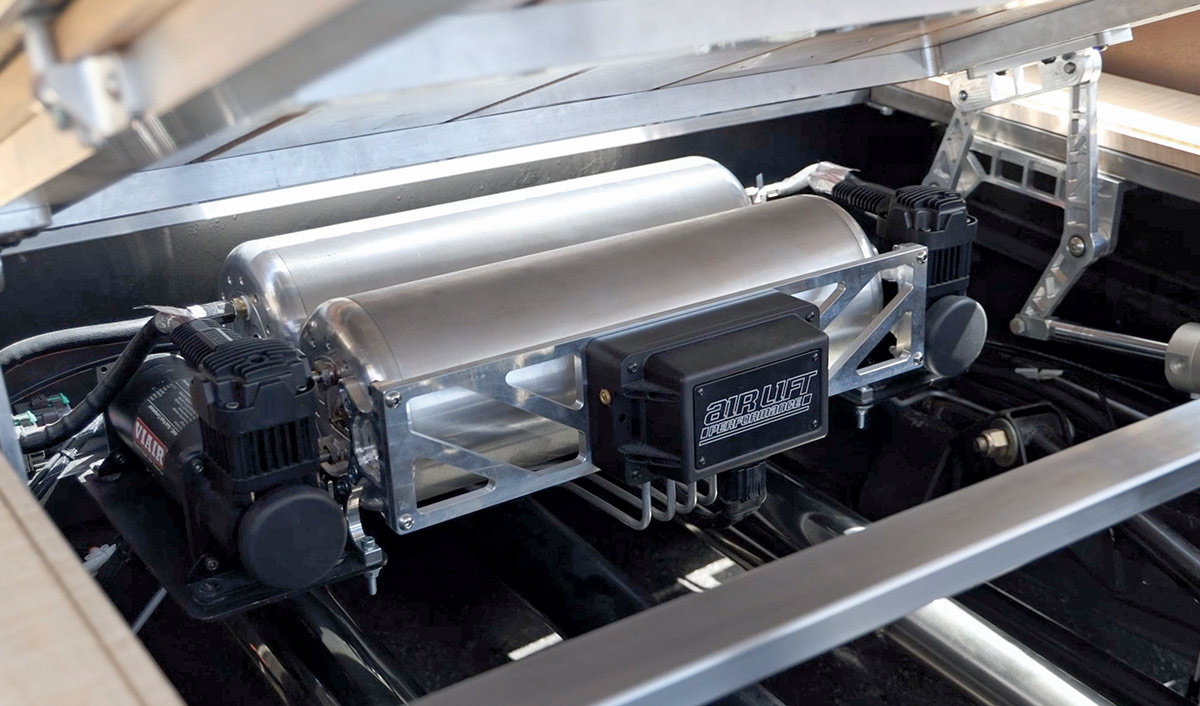
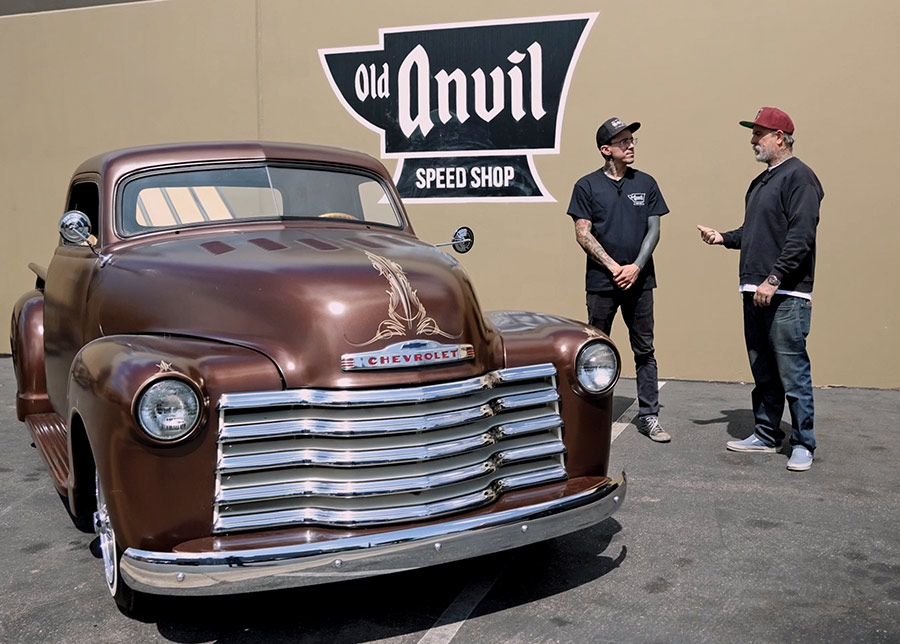
 SOURCES
SOURCES